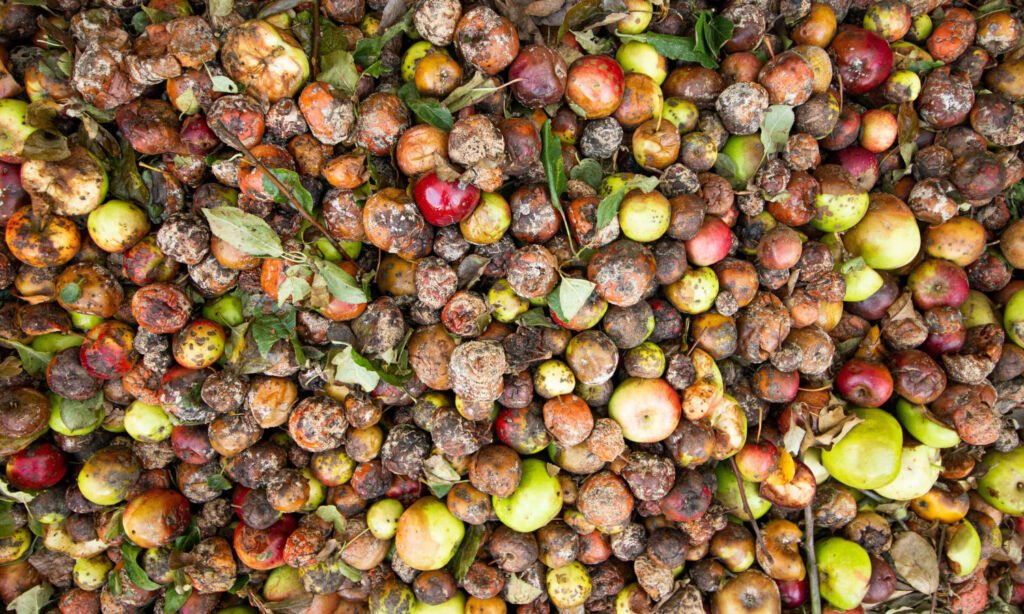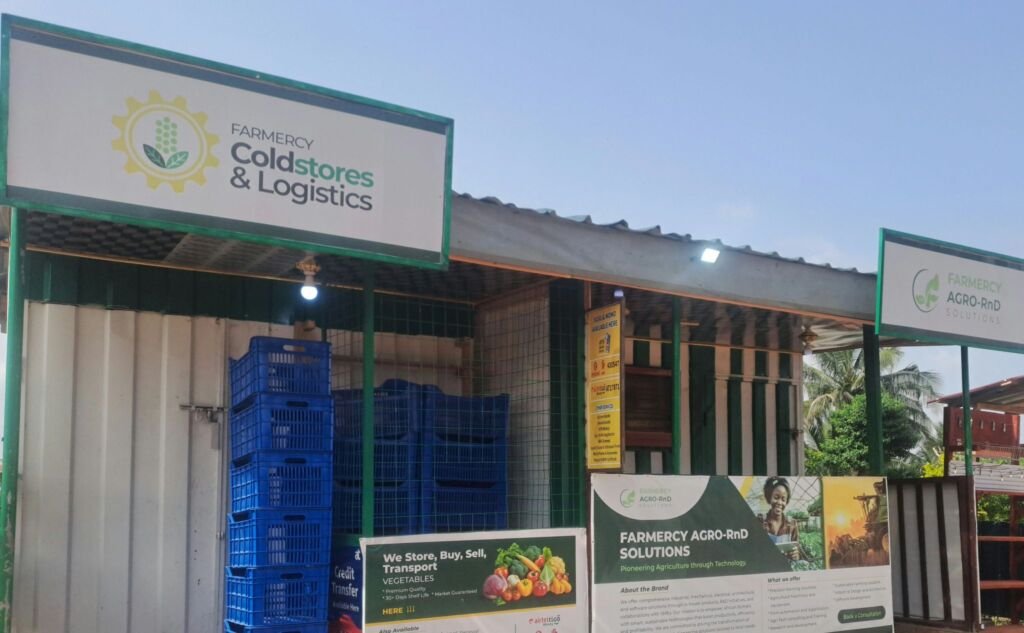Staggering levels of post-harvest loss continue to chronically assail and debilitate agricultural systems across Africa, severely undercutting food security and wider economic progress. An estimated 1/3 of the continent’s entire farmed output, valued at around $50 billion, gets wasted annually owing to poor post-production handling and distinctly lacking storage capacity.

For highly perishable fruits, vegetables, and animal proteins, losses approach an egregious 50% within a few days of harvest because smallholder-dominated agrarian economies like Ghana completely lack scientific cold chain infrastructure. This article examines the huge promise decentralized solar-powered cold storage solutions hold for sustainably curbing post-harvest wastage that severely hampers African agricultural viability presently.
The Post-Harvest Wastage Crisis in Africa
After decades of prioritizing yield improvement interventions to raise farm-level productivity, Africa’s immense and still proliferating post-harvest losses strongly reflect entrenched inadequacies afflicting agricultural value chains once crops get off the fields. In the absence of scientific preservation, a sizable share of the annual output gets Physical and quality degradation from exposure and pest manifestations drastically reduce shelf lives.
Overall, Africa loses enough food annually to feed at least 300 million people. For societies grappling with advanced malnutrition, such improper storage-induced wastage has calamitous humanitarian impacts, obliterating livelihoods and stunting national growth. Beyond sheer moral outrage invoking images of rotting piles where food once lay, colossal economic losses estimated to be approaching the value of total annual food imports ($35 billion) make Africa’s cold chain inadequacies a pressing structural economic impediment.
Farmer Incomes and Food Security Hammered
For small farms responsible for up to 80% of total agricultural production in Sub-Saharan nations, including Ghana, such post-harvest losses prove utterly disastrous. With limited output volume aggregation potential and lacking proper storage access, most individual farmers struggle to swiftly transport modest surpluses to urban cold warehouses or processors before deterioration sets in.
Most smallholders, therefore, sell promptly after harvest, when market prices tank amid oversupply gluts. And yet still 30–40% of their meagre stocks fail to sell before entirely perishing, directly hitting incomes, prosperity, and food availability. Fruit and vegetables see over 50% wastage, erasing vital nutritional components from diets.
Overall, individual losses ranging from $500 to $1000 routinely debilitate farming households through lost sales revenue, destroyed household food reserves, and diminished harvest reliability, thereby entrenching rural poverty levels.
Inflated Environmental Burdens

Furthermore, the heavy climate footprint of African agriculture, estimated to be responsible for 70% of annual greenhouse emissions, gets needlessly worsened by vast wasted production. As unused post-harvest farm residues and discarded rotten organic matter decompose instead of undergoing circular bioeconomy utilization, methane and CO2 emissions soar while soil nutrient balances deteriorate from losing recyclable biomass into landfills.
And by effectively slashing farm productivity and incomes, post-harvest losses compel endlessly expanding cropland under ploughing to compensate for perpetually shrunken usable output. This accelerates deforestation and environmental harm in a vicious cycle. Africa’s net food availability conundrum thereby spurs outsized environmental burdens from both production and disposal sides, despite net nutritional gains remaining minimal.
Cold Storage Crucial for Enhancing Shelf Life
Cold chain technologies encompassing refrigeration, insulation, and refrigerated transport prevent post-harvest deterioration by optimizing temperature and atmospheric conditions to prolong the quality retention of chilled or frozen cargo. By checking exposure-induced degeneration, scientific warehousing near/after farm sites can preserve most fruits/vegetables 2-3 weeks instead of 2-3 days.
Grains, meat, fish, etc. also sustain far lower losses and pest infestations under regulated warehouse temperatures, retaining higher nutritional properties and market prices. Overall, effective cold storage cushions shelf lives multifold. For every extra chilled day, farmers gain wider market access and traders enhance flexibility, minimizing fire-sales from compulsions to liquidate stocks before inevitable ambient decay. Buoyant farmgate prices support farm profitability and regional food availability stability.
Africa’s Missing Cold Chain Infrastructure
However, average cold chain capacity in most African countries remains below 2% of levels across industrialized nations. (12) Countries like Ghana and Nigeria, with dozens of airports and seaports, often possess just 1-2 functional cold room facilities nationally, even as perishable export trade aspirations burgeon amid agricultural expansion plans.
While urban zones house some consolidated cold storage units, smallholder farms dominating food production lack access. Low rural electrification coupled with high warehouse investment costs deters individual farmers from owning cold rooms independently. Small volumes and inadequate production clustering also hamper the site viability of commercial public refrigerator operators devoid state support.
Diesel-powered generators, commonly used for makeshift cold storage wherever available, entail mammoth fossil fuel expenses along with noise and carbon pollution. Battery storage struggles with intermittency, given the tiny size of solar equipment. Overall, Africa’s cold chain gaps appear almost as expansive as the continent itself.
Unlocking Decentralized Cold Storage Potential

However, the renewable energy wave now makes village-level cold storage infrastructure increasingly feasible without grid connectivity, thanks to plunging solar technology costs. Refrigeration machinery and insulation sheets utilizing clean thermal energy, even in remote locations, can sustain the cold chain to extend post-harvest longevity.
Platform bulk cooling technologies show particular promise given their suitability for farms with modest individual capacity. Social enterprises like InspiraFarms spearhead relevant innovation by deploying modular cold rooms adjacent to smallholder communities. Their 3 tonnes of vegetable per day capacity solar-powered walk-in cold rooms using thermal energy storage for overnight preservation without batteries are increasingly finding uptake across rural Kenya, Uganda, etc., serving farming clusters through flexible use arrangements.
Widening smallholder access to decentralized cold storage promises urgently needed relief from weather fluctuations and seasonal gluts. Village-level cool chambers with a 100-500-tonne capacity running on solar, biogas, or hybrid renewable systems have transformative potential across rural Africa, considering the tiny cumulative capacity presently. Besides chilling, such coldrooms located alongside farming clusters serve ancillary needs like facilitating product aggregation, storage, and time-sensitive distribution.
Policy Reforms to Accelerate Decentralized Infrastructure
However, considerable scope remains for optimizing policies and market conditions to spur decentralized cold chain availability through private and communal investment. Key measures African governments should enact include:
- Subsidizing clean energy cold storage capital costs for village cooperatives
- Underwriting project investments/loans via partnerships
- Funding pilot testing across agro-contexts and capacities
- Skills training programs decentralized warehouse management
- Incentives for localized/modular construction
- Streamlining regulations for rapid project approvals
- Integrating cold chain investments across national agricultural plans
Additionally, stressing location-specific design utilizing local construction materials can ease adoption constraints. Formalizing equitable community ownership models with inclusive usage terms instead of limiting individual contracts is also critical.
Conclusion
In essence, Africa’s acute lack of cold storage capacity causes severe post-harvest losses nearing or exceeding 30%, eviscerating value, growth, and sustainability across agricultural value chains. Distributed renewable energy-powered warehouse innovations, though, offer hopes for affordably expanding small farm-level cold chain usefulness. This demands policy reforms that focus attention and investment on decentralized cold storage infrastructure advancement as pivotal to optimizing agriculture’s future.
References
- Post-Harvest Losses aggravate Food Insecurity (Alliance for a Green Revolution in Africa)
- Reducing Food Loss in Africa Through Improved Postharvest Management (UNEP) https://www.unep.org/resources/report/reducing-food-loss-africa-through-improved-postharvest-management
- Economic Cost of Food Wastage (FAO)
http://www.fao.org/news/story/en/item/196402/icode/
- Missing Food: The Case of Postharvest Grain Losses in Sub-Saharan Africa (World Bank)
- The Importance of Post-Harvest Management (ACDI/VOCA)
- Postharvest Education Foundation
- Postharvest Losses aggravate Food Insecurity (Alliance for a Green Revolution in Africa)
- Missing Food: The Case of Postharvest Grain Losses in Sub-Saharan Africa (World Bank)
- Food Wastage Footprint & Climate Change (FAO)
http://www.fao.org/nr/sustainability/food-loss-and-waste/en/
- Postharvest Training & Services Center UC Davis
- Cold Storage Infrastructure Needed to Curb High Postharvest Losses (FAO)
- Africa Continental Free Trade Area Opportunities in Food and Agriculture (FAO)
- Expanding Kenya’s Cold Chain Capacity Important for Food Security (USAID)